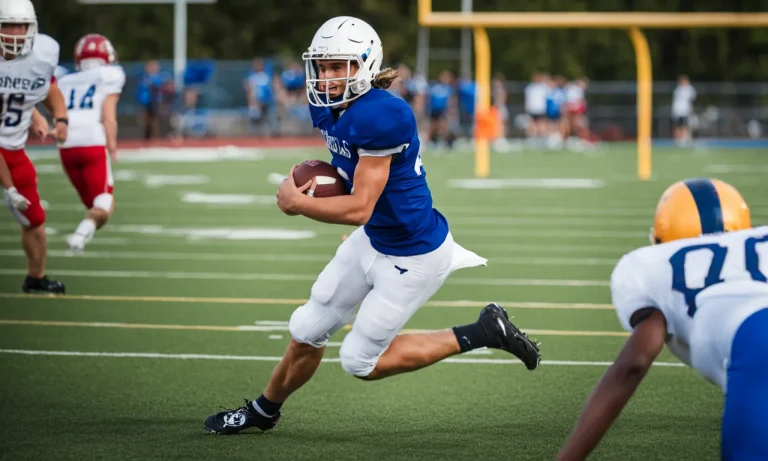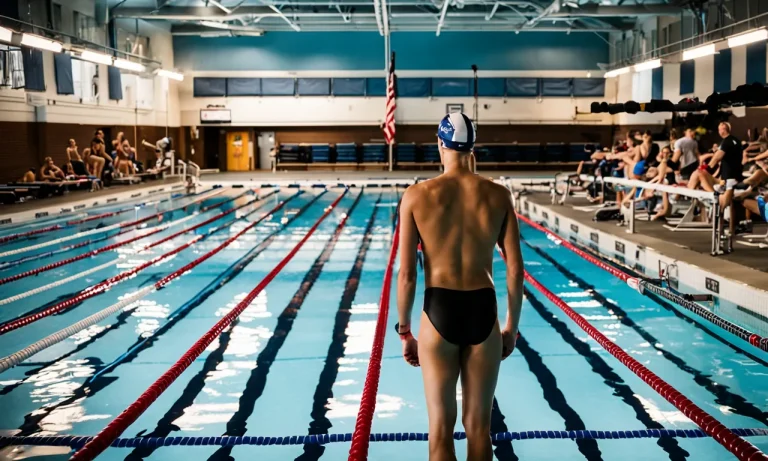Cross country running is a popular fall sport for many middle school students. As parents sign their kids up for the team, a common question arises: how far do these young runners actually race? For those looking to gauge how challenging cross country will be for their middle schooler, this article will provide a thorough overview of typical race distances.
If you’re short on time, here’s the quick answer: most middle school cross country meets feature race distances between 1-2 miles. The most common middle school cross country race distance is 1.5 miles.
Typical Middle School Cross Country Race Distances
1.5 Miles is Most Common
When it comes to middle school cross country races, the most common distance you’ll find is 1.5 miles. This distance strikes a balance between challenging runners and ensuring they can complete the race comfortably.
It allows young athletes to showcase their endurance and speed while also being manageable for those who are new to competitive running. Most middle school cross country courses are designed to accommodate this distance, providing a mix of terrains and obstacles to keep things interesting for the participants.
View this post on Instagram
1-Mile Races Usually for Beginning Runners
For beginning runners or those who may be new to the sport, 1-mile races are often organized. These races serve as an introduction to the world of cross country running and provide an opportunity for young athletes to gain experience and build confidence.
The shorter distance allows them to focus on developing their running technique and learning how to pace themselves. It’s a great way for beginners to dip their toes in the water and get a taste of what cross country running is all about.
2-Mile Races for More Advanced Kids
As runners progress and gain more experience, they may move on to 2-mile races. These longer distances are typically reserved for more advanced kids who have built up their endurance and are ready to take on a greater challenge.
Running 2 miles requires not only physical strength but also mental resilience and a strong determination to push through fatigue. It’s an exciting milestone for young runners to reach and can serve as a stepping stone towards longer races in high school and beyond.
It’s important to note that these race distances can vary slightly depending on the specific rules and regulations of each school or district. Some may have standardized race distances, while others may offer a range of options to accommodate different skill levels.
If you’re interested in finding out the specific race distances for your local middle school cross country events, be sure to check with the school or district’s athletic department.
How Race Distances Progress through Middle School
6th Grade: 1-1.5 Miles
In their first year of middle school, 6th-grade cross country runners typically tackle race distances ranging from 1 to 1.5 miles. This distance allows young athletes to build their endurance and stamina gradually while still challenging them to push their limits.
It sets a solid foundation for their future years in the sport.
7th Grade: 1.5 Miles
As 7th graders, cross country runners are usually ready to take on a slightly longer distance of 1.5 miles. At this stage, they have gained more experience and improved their fitness levels. The increase in distance helps them further develop their endurance and mental resilience.
They learn to pace themselves and strategize their race effectively.
8th Grade: 1.5-2 Miles
By 8th grade, cross country runners are prepared to tackle the most challenging distances of their middle school journey. Races in this grade often range from 1.5 to 2 miles. This increase in distance allows the athletes to demonstrate their growth and progress throughout the years.
They have developed the physical and mental strength required to complete longer races successfully.
It’s important to note that these distances are general guidelines and may vary depending on the school, region, or specific cross country program. Coaches and race organizers consider various factors such as the skill level and fitness of the athletes when determining race distances.
View this post on Instagram
Factors that Determine Middle School Race Length
Age and Experience of Runners
The age and experience of the runners play a significant role in determining the length of the middle school cross country race. Younger runners, typically in sixth or seventh grade, may cover a shorter distance compared to older, more experienced runners in eighth or ninth grade.
This is to ensure that the race is both challenging and appropriate for each age group. It allows younger runners to build their endurance gradually while providing older runners with a more demanding race.
Difficulty of Course
The difficulty of the course is another crucial factor that affects the length of the middle school cross country race. Courses can vary significantly in terrain, including hills, trails, and grassy fields.
A more challenging course with steep inclines and uneven terrain may require shorter distances to account for the increased effort and difficulty. On the other hand, a relatively flat and easy course may allow for longer distances, as runners can maintain a faster pace.
Event Type (Dual Meet vs Invite)
The type of event, whether it is a dual meet or an invite, can also impact the length of the middle school cross country race. In a dual meet, where only two teams compete against each other, the race distance may be shorter to accommodate the limited number of participants.
On the other hand, in an invitation-only meet where multiple schools participate, the race distance may be longer to accommodate a larger field of runners.
Preparing for Middle School Cross Country Distances
Slowly Build Up Mileage over Summer
Preparing for middle school cross country distances requires a gradual increase in mileage during the summer months. It’s important for runners to start off with shorter distances and gradually build up their endurance.
This approach helps prevent injuries and allows the body to adapt to the demands of longer runs. By slowly increasing mileage over time, middle school runners can develop the stamina needed to excel in cross country races.
Practice Interval Training
Interval training is a crucial component of preparing for middle school cross country distances. This training technique involves alternating between periods of high-intensity running and recovery. By incorporating interval training into their workouts, runners can improve their speed, endurance, and overall performance.
It’s recommended to start with shorter intervals and gradually increase the duration and intensity as the season progresses. Interval training not only helps runners build the physical strength necessary for longer distances but also improves their mental resilience.
Focus on Proper Running Form
Proper running form is essential for middle school cross country runners to maximize their efficiency and minimize the risk of injury. Some key elements of good running form include maintaining an upright posture, landing mid-foot, and maintaining a consistent cadence.
It’s important for runners to be mindful of their form during training sessions and races. Regular practice and feedback from coaches can help middle school runners refine their technique and improve their overall performance.
Final Tips for Middle School Cross Country
Emphasize Having Fun and Improving
When it comes to participating in middle school cross country, it’s important to emphasize the importance of having fun and improving. While competition can be intense, it’s crucial to remind your child that the primary goal is to enjoy the sport and make progress.
Encourage them to set personal goals and focus on their own growth rather than comparing themselves to others. Remind them that every race is an opportunity to learn and improve, and that success is not solely defined by winning.
Provide Lots of Positive Encouragement
Positive encouragement plays a vital role in motivating young cross country runners. Let your child know that you are proud of their efforts, regardless of the outcome. Offer words of encouragement before, during, and after races to boost their confidence and help them stay motivated.
Celebrate their achievements, whether big or small, and remind them that their hard work and dedication are what truly matter. A little positivity can go a long way in helping your child perform their best and enjoy the sport.
Help Your Child Eat Well and Hydrate Properly
Proper nutrition and hydration are crucial for middle school cross country runners. Encourage your child to eat a balanced diet that includes carbohydrates for energy, protein for muscle repair, and healthy fats for overall health.
Make sure they have a nutritious meal or snack before races to fuel their bodies. Additionally, hydration is key to performance and recovery. Remind your child to drink plenty of water throughout the day, especially on race days.
For more information on nutrition and hydration for young athletes, you can visit reputable websites such as eatright.org or cdc.gov. These sites offer valuable resources and guidelines to help your child maintain a healthy and balanced diet.
Conclusion
While middle school cross country race distances do push young runners, the progressively longer races help build endurance and confidence without overtraining still-developing bodies. Most middle school cross country meets feature race distances between 1-2 miles, with 1.5 miles being the most common.
With smart training and supportive coaching, cross country can be an incredibly rewarding experience for middle schoolers of all athletic abilities.






